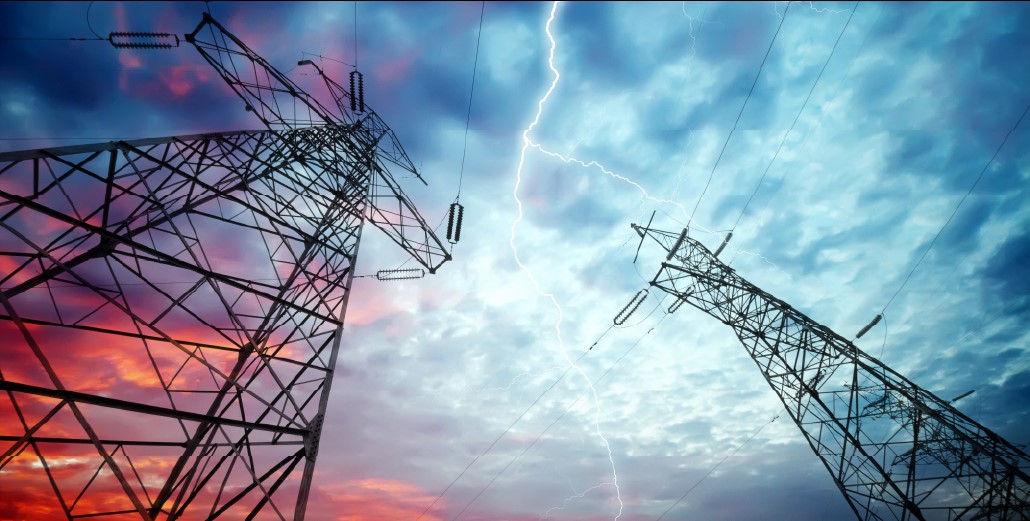7-minute read
Today’s utility organization faces a host of new and escalating risks that impact grid reliability, public safety, and their own financial soundness. To manage those risks successfully, they must rely on data—internal and external—and the AI and machine learning solutions that spin this data into powerful decision-making assets.
AN INCREASINGLY COMPLEX RISK ENVIRONMENT
Increasing outages
As the national electric grid continues to age, outages are becoming more common. In 2020, U.S. utility customers experienced 1.33 billion outage hours, an increase of 73 percent from 2019. According to a recent study, the frequency of major blackouts (lasting at least 1 hour and impacting 50,000 or more customers) increased by 60 percent between 2016 and 2021.
Escalating climate events
In 2021 alone, more than 8,800 wildfires burned over 2.5 million acres in California; the West Coast experienced a record-breaking heat wave; Hurricane Ida left over 1 million residents without power; and Winter Storm Uri caused power outages for 69 percent of the population of Texas. As climate change continues to drive more frequent and more severe weather events, utilities must be ready to manage the associated risks.
Evolving demand profiles
Over the last 10 years, the number of electric vehicles (EVs) in the United States grew from 16,000 to over 2 million. With the average EV requiring 30 kilowatt hours to travel 100 miles—the equivalent of an entire day’s worth of electricity usage for an average household—some residential areas are seeing massive surges in the demand for electricity. If utilities can accommodate these increases reliably, they can reduce the risk of imbalances that lead to brownouts and blackouts.
HOW AI AND MACHINE LEARNING ENHANCE RISK MANAGEMENT
In an environment marked by heightened risk, utilities are turning to data—from their own databases and from outside sources—to support decisions that will keep power flowing while also protecting public safety and safeguarding the environment. Here are just a few use cases where utilities are leveraging analytics, AI, and machine learning to manage risk proactively.
Predictive asset management
Traditional approaches to asset inspection and maintenance—sending out inspection teams on a set schedule for manual assessments—not only drive up costs, but also raise the possibility of overlooking equipment that is at high risk of failure. Machine learning platforms can draw in data from hundreds of sources, including smart sensors, equipment specs, drone cameras, lidar, and others, to support asset management on three levels:
-
- Monitoring: Utilities can monitor assets at scale by feeding cloud-based field data into machine learning algorithms.
- Prediction: Algorithms can analyze field data to identify patterns and proactively indicate when assets are near failure or at risk of environmental damage.
- Prevention: In the event of an outage, machine learning enables utilities to instantly reroute electricity to restore service quickly and to prioritize deployment of incident response crews to areas where they are most needed.
Vegetation management
Effective vegetation management is a key factor in wildfire prevention, and machine learning enables utilities to automate identification of high-risk situations. Using data from drone footage, climate conditions, inspection records, and tree species profiles, utilities can train machine learning models to assign risk scores to each individual tree. These models can then inform prioritization of trees for inspection, optimal trimming clearances, and reporting of the number of risks prevented by targeted trimming.
Grid hardening
Through grid hardening initiatives, utilities improve the resilience of their infrastructures in withstanding severe weather events, reducing the likelihood of weather-related outages and shortening restoration times if an outage does occur. Here again, machine learning algorithms can take in massive amounts of data from climatic forecasts, equipment specs, historical records, and other sources to help utilities plan and prioritize their grid-hardening efforts.

CASE STUDY: MACHINE LEARNING IN PUBLIC SAFETY POWER SHUT-OFF (PSPS) PLANNING
This utility’s machine learning model aggregates data such as wind speed and direction, temperatures, humidity levels, land development (residential versus commercial), equipment composition (e.g. wooden versus metal poles), inspection results, and a host of other factors to project which areas are at highest risk. This information is a critical asset in the utility’s decisions concerning where to shut off power and for how long. The model also takes into account socioeconomic factors to ensure that less-advantaged communities receive the same consideration as more affluent areas.
USING DIGITAL TWINS FOR FIELD SITUATIONAL AWARENESS
One of the most powerful AI-driven tools for utilities looking to manage risk proactively is the digital twin. A digital twin is a virtual model of a physical entity that incorporates underlying engineering data, and it’s particularly well-suited to complex systems like electrical grids.
A digital twin aggregates data from geographic information systems (GIS), maintenance records, SCADA feeds from sensors and meters, supply and demand patterns, and a wide variety of other sources to create a virtual copy of a utility’s grid. Utility personnel can “see” what’s going on in the grid at any given time, which enables them to quickly identify and address surges in demand, possible equipment failures, transmission and distribution irregularities, and other potentially disruptive occurrences. Digital twins also deliver valuable information that utilities can use in planning grid hardening initiatives.
Digital twins enables utility personnel to quickly identify and address surges in demand, possible equipment failures, transmission and distribution irregularities, and other potentially disruptive occurrences.
PREPARING TO FACE THE FUTURE
Utilities must continuously adapt to a complex, fluid environment in which disruptions must be foreseen and planned for. Fortunately, data holds the key to proactive risk management, and AI and machine learning can spin this data into vital assets for making strategic, informed decisions that can benefit grid reliability, public safety, and environmental protection.

Digital transformation done right
We create powerful custom tools, optimize packaged software, and provide trusted guidance to enable your teams and deliver business value that lasts.
Like what you see?

Kaitlyn Petronglo is a Manager in the Advanced Analytics practice area at Logic20/20.

